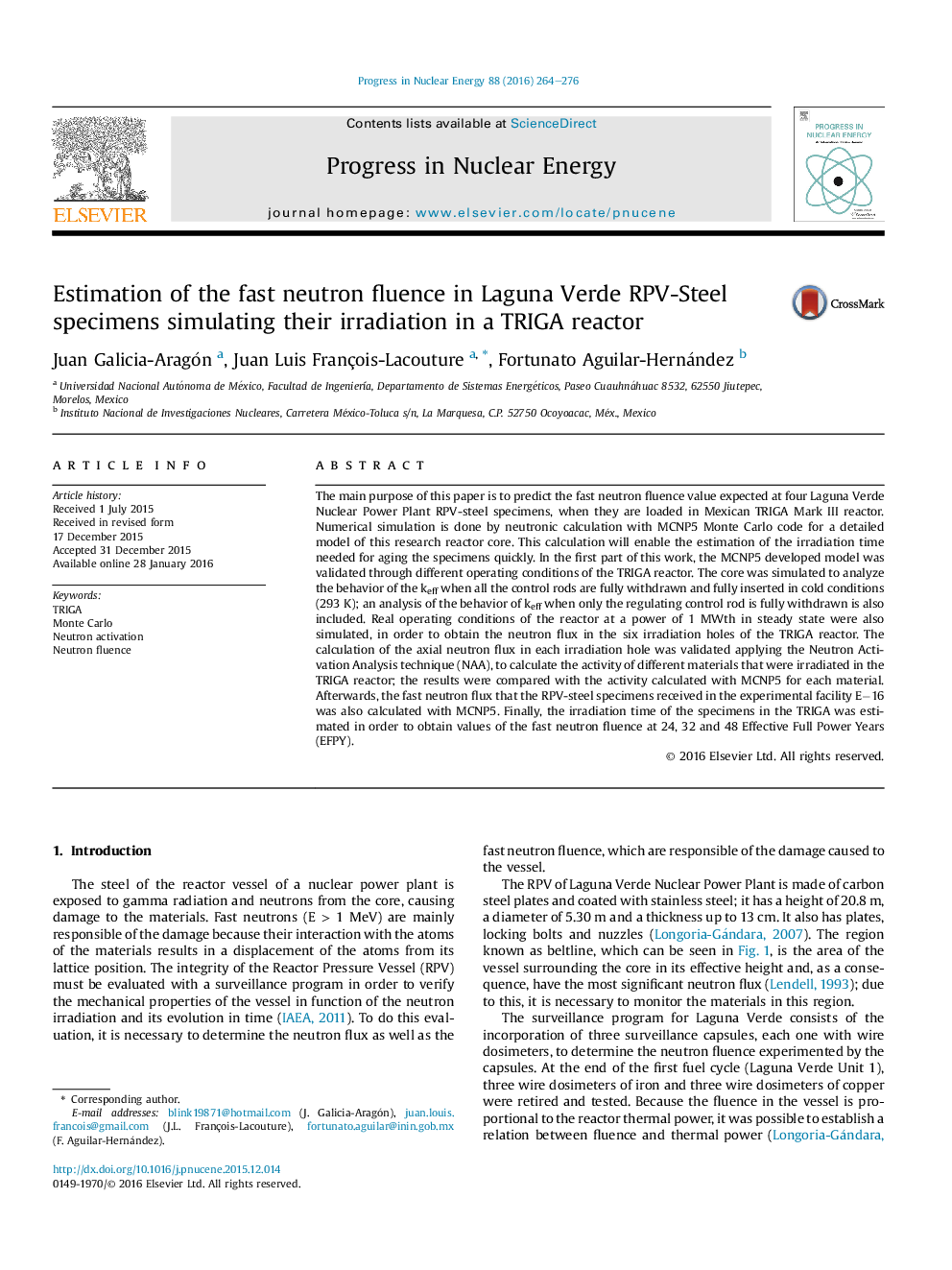| Article ID | Journal | Published Year | Pages | File Type |
|---|---|---|---|---|
| 1740396 | Progress in Nuclear Energy | 2016 | 13 Pages |
•The Mexican TRIGA Mark III was simulated with the MCNP5 Monte Carlo code.•The MCNP5 model was validated with TRIGA Mark III operational results.•The fast neutron fluence was calculated for Laguna Verde RPV-steel specimens.•The irradiation time of Laguna Verde RPV-steel specimens were estimated with MCNP5.
The main purpose of this paper is to predict the fast neutron fluence value expected at four Laguna Verde Nuclear Power Plant RPV-steel specimens, when they are loaded in Mexican TRIGA Mark III reactor. Numerical simulation is done by neutronic calculation with MCNP5 Monte Carlo code for a detailed model of this research reactor core. This calculation will enable the estimation of the irradiation time needed for aging the specimens quickly. In the first part of this work, the MCNP5 developed model was validated through different operating conditions of the TRIGA reactor. The core was simulated to analyze the behavior of the keff when all the control rods are fully withdrawn and fully inserted in cold conditions (293 K); an analysis of the behavior of keff when only the regulating control rod is fully withdrawn is also included. Real operating conditions of the reactor at a power of 1 MWth in steady state were also simulated, in order to obtain the neutron flux in the six irradiation holes of the TRIGA reactor. The calculation of the axial neutron flux in each irradiation hole was validated applying the Neutron Activation Analysis technique (NAA), to calculate the activity of different materials that were irradiated in the TRIGA reactor; the results were compared with the activity calculated with MCNP5 for each material. Afterwards, the fast neutron flux that the RPV-steel specimens received in the experimental facility E−16 was also calculated with MCNP5. Finally, the irradiation time of the specimens in the TRIGA was estimated in order to obtain values of the fast neutron fluence at 24, 32 and 48 Effective Full Power Years (EFPY).
